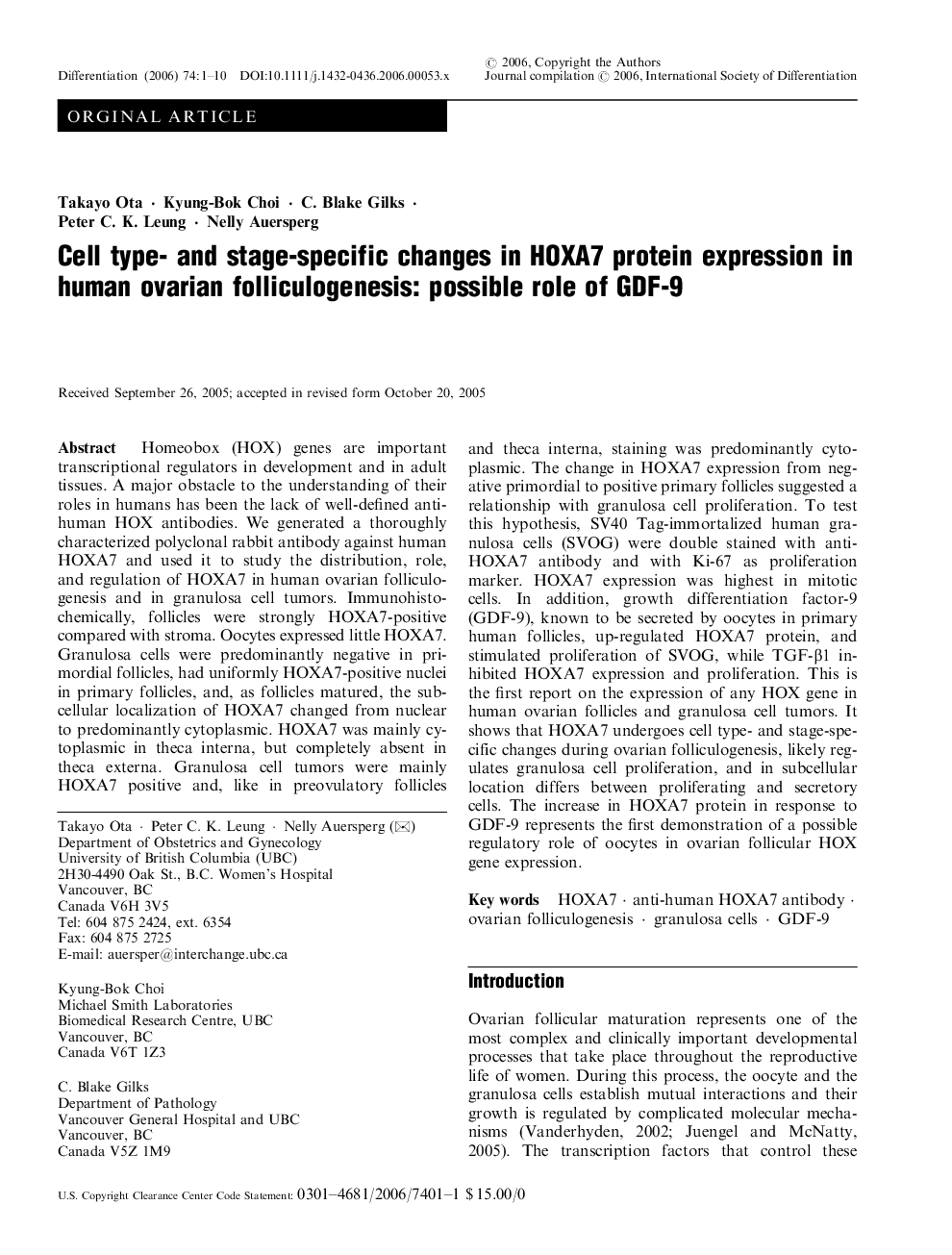| Article ID | Journal | Published Year | Pages | File Type |
|---|---|---|---|---|
| 2120150 | Differentiation | 2006 | 10 Pages |
Homeobox (HOX) genes are important transcriptional regulators in development and in adult tissues. A major obstacle to the understanding of their roles in humans has been the lack of well-defined anti-human HOX antibodies. We generated a thoroughly characterized polyclonal rabbit antibody against human HOXA7 and used it to study the distribution, role, and regulation of HOXA7 in human ovarian folliculogenesis and in granulosa cell tumors. Immunohistochemically, follicles were strongly HOXA7-positive compared with stroma. Oocytes expressed little HOXA7. Granulosa cells were predominantly negative in primordial follicles, had uniformly HOXA7-positive nuclei in primary follicles, and, as follicles matured, the subcellular localization of HOXA7 changed from nuclear to predominantly cytoplasmic. HOXA7 was mainly cytoplasmic in theca interna, but completely absent in theca externa. Granulosa cell tumors were mainly HOXA7 positive and, like in preovulatory follicles and theca interna, staining was predominantly cytoplasmic. The change in HOXA7 expression from negative primordial to positive primary follicles suggested a relationship with granulosa cell proliferation. To test this hypothesis, SV40 Tag-immortalized human granulosa cells (SVOG) were double stained with anti-HOXA7 antibody and with Ki-67 as proliferation marker. HOXA7 expression was highest in mitotic cells. In addition, growth differentiation factor-9 (GDF-9), known to be secreted by oocytes in primary human follicles, up-regulated HOXA7 protein, and stimulated proliferation of SVOG, while TGF-β1 inhibited HOXA7 expression and proliferation. This is the first report on the expression of any HOX gene in human ovarian follicles and granulosa cell tumors. It shows that HOXA7 undergoes cell type- and stage-specific changes during ovarian folliculogenesis, likely regulates granulosa cell proliferation, and in subcellular location differs between proliferating and secretory cells. The increase in HOXA7 protein in response to GDF-9 represents the first demonstration of a possible regulatory role of oocytes in ovarian follicular HOX gene expression.
